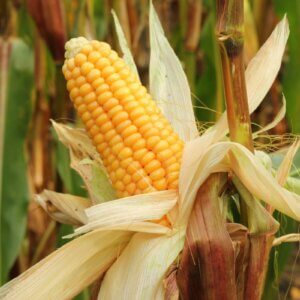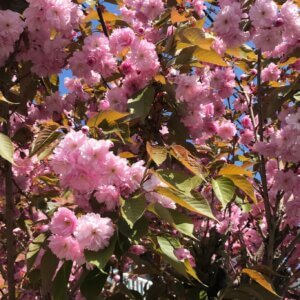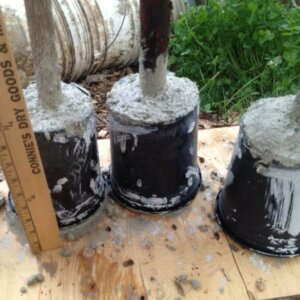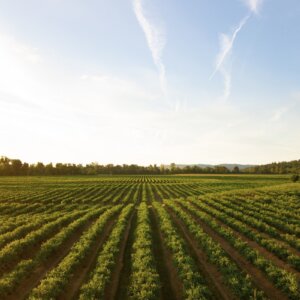No matter if it is viral, fungal, or bacterial, plant disease can enter your garden in a diverse array of ways. Many plant diseases are difficult to identify or to even to determine if what is attacking your plants is, in fact, a disease.
Symptoms appear similar from bacterial to viral to fungal. Even insects or environmental stresses can exhibit similar signs. The best way to guard against disease intrusion is to create the best growing environment you can for your plants.
While it may be too late to prevent plant disease from entering your garden, it isn’t too late to contain it and eradicate the problem. Don’t have a disease problem? That’s great, but keep in mind that you’re still susceptible. Check out our article on preventing plant disease to take steps toward keeping your garden healthy.
First Off, Identify The Source Of The Problem
To implement an effective plant disease management plan, it is important to, first of all, determine the cause of the problem.

Some Questions To Ask
- Are garden plants exhibiting yellow leaves, less than vigorous growth, or other visible signs of distress?
- Are symptoms associated with the weather, the garden site, or your cultural care?
- Is your plant infected with a fungus?
- Is the problem with your plants a root problem or a foliar issue?
- Is it systemic in the plant or localized?
- How many plants are affected?
- How many different plant species are involved, and how long have your plants shown symptoms?
Until you can identify or diagnose the cause of the problem, you cannot know whether there is a need to treat or isolate the plant.
If you cannot determine the cause of failure or damage in your plants, take a sample of the leaves and perhaps a photo of the plant to your local county extension office.
https://www.instagram.com/p/BF9kkL2TG9E/?tagged=diseasedplants
Since there are dozens of common diseases that attack both vegetable and fruit crops, your county extension agent is your best source of advice in developing control strategies to help reduce crop losses from plant disease with environmentally friendly measures and methods that are affordable and effective.
Be Aware Of Vegetable Families That Are Susceptible To Similar Diseases
Cantaloupe, pumpkin, squash, cucumber, and watermelon are vulnerable to bacteria wilt, gummy stem blight, Fusarium wilt, Cercospora leaf spot, anthracnose, and powdery mildew.
https://www.instagram.com/p/BU9tbFWgV94/?tagged=powderymildew
Members of the Cole plant family including broccoli, mustard, collards, cabbage, Brussels sprouts, kohlrabi, rutabaga, Chinese cabbage, kale, rape, and cauliflower are susceptible to black rot, black stem disease, and downy mildew.
Tomatoes, all types of peppers, eggplant and potatoes are susceptible to anthracnose, Fusarium and Verticillium wilt, early blight, late blight, Septoria leaf spot, and mosaic virus.
Once you’ve identified the plant disease, keep an eye on all of your plants that are susceptible to the same disease. For a quicker reference, here are all of those diseases and the plants that are commonly afflicted by them:

Control Insect Pests That Carry Disease
If insects are the problem with your plants, choose bio-rational pesticides, which are environmentally friendly in that they have minimal harmful effects on non-target organisms and the ecosystem.
Examples of bio-rational pesticides include organic insecticidal soap, horticultural oil, potassium bicarbonate, and neem oil.
Avoid noxious chemical dust, soil drenches, and sprays. These are not the only effective means of eradicating plant disease. An organic multifaceted approach includes sanitation, resistance, culture, and biological controls.
https://www.instagram.com/p/Bbovb2Sl9BV/?tagged=insectsattack
While it is impossible to eliminate disease entirely, set a goal to manage them by keeping disease at an acceptable level. Prevention is, by far, the best method of plant disease management.
The Do’s And Do Not’s Of Containing Plant Disease
Do:
- Mulch around the base of garden plants to conserve moisture and provide a protective barrier between the soil and plant foliage. When mulch is maintained around garden plants, it provides a host of benefits in addition to being an effective tool in deterring soil-released diseases.
- Prune at appropriate times. Always use clean tools to avoid transmitting disease.
- Wipe down pruning shears each time you move to a new plant, shrub, or tree.
- Disinfect garden implements with a solution of one part household bleach to nine parts of water or wipe down tools, pots, flats, shovels, and spades with a rag saturated with rubbing alcohol.
- Practice companion planting. It’s wise to research which garden plants are beneficial to each other. As an example, thyme, mint, oregano, and dill ward off insect pests on carrots and cabbage plants.
- Rotate crops. Successful gardeners suggest that the same crop should not be planted in the same space but once every four years.
Do Not:
- Do not add disease-infected plant debris to the compost pile. The pathogen may survive the composting process and emerge once again within the finished product. After handling diseased plant material, be sure to disinfect garden gloves and tools.
- Do not plant members of the same plant species in the same location or area of the garden – if you can.
- Do not cause mechanical injuries to plants. An injured plant is susceptible to plant disease.
References
- Plant Diseases, United States Department of Agriculture
- Current and Prospective Methods for Plant Disease Detection, US National Library of Medicine
- Environmental Friendly Methods For Management of Plant Diseases, Department of Plant Pathology and Ecology The Connecticut Agricultural Experiment Station
- Disease Prevention In The Home Vegetable Garden, MU Horticultural Guide










































Leave a Reply